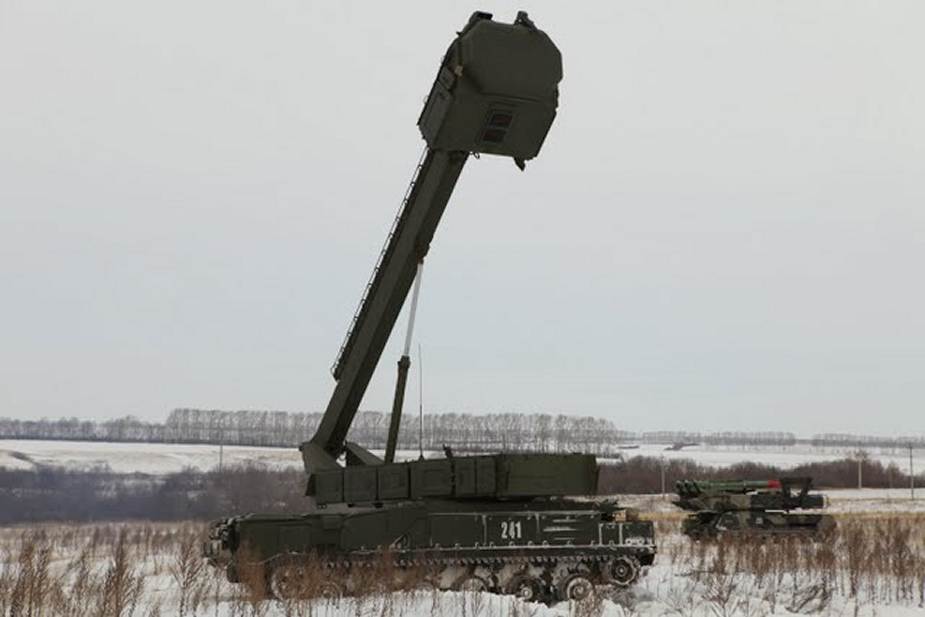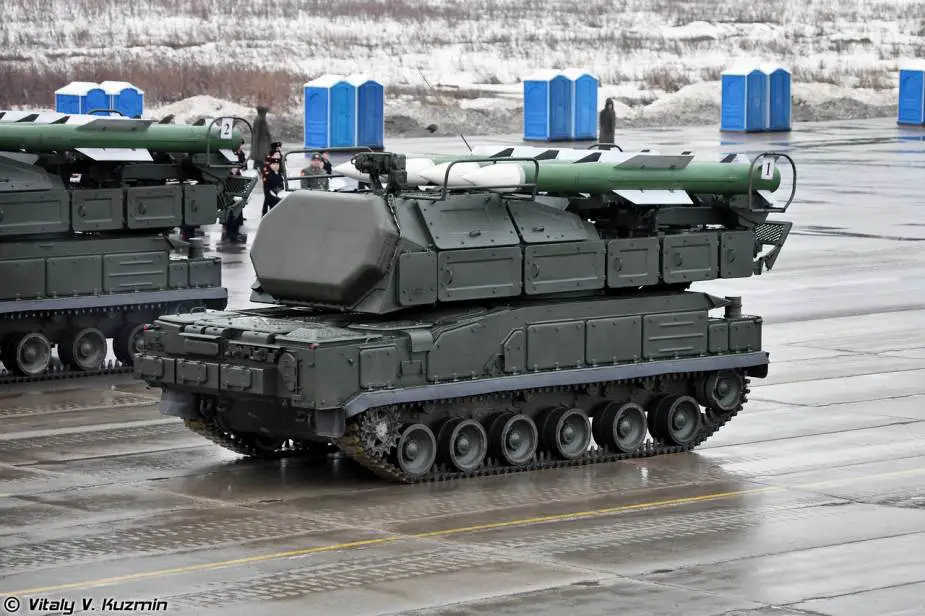- Army
- Conflicts in the world
- Israel - Iran conflict 2025
- Pakistan - India Conflict 2025
- Russia Ukraine War 2022
- Libya conflict day by day
- HAMAS - Israel War 2023
- Operation Serval in Mali French Army
- Sangaris operation Central African Republic
- Sangaris opération militaire République Centreafrique
- Ukraine - Russia conflict
- Syria conflict news
- Defence & Security Industry Technology
- Armies in the world
- Analysis Defense and Security Industry
- Conflicts in the world
- Navy
- Air
Ukrainian Forces destroy 9S36 key radar of Russian Buk-M2 air defense system
Ukrainian forces have reportedly destroyed a 9S36 radar vital element of the Russian BUK-M2 air defense missile system. A video released by "OSINTTechnical" on Twitter on July 31, 2023, revealed the destruction of the Russian 9S36 Low Altitude Acquisition and Engagement Radar. This incident underscores the escalating efforts of Ukrainian forces to neutralize Russian air defenses, a strategy deemed critical for the protection and control of Ukrainian airspace.
Follow Army Recognition on Google News at this link

Ukrainian forces have destroyed a Russian Buk-M2 air defense missile system and associated radar 9S36. (Picture source Video footage Twitter)
A key reason for this strategic focus could be the pursuit of air superiority. Air defense systems are fundamentally designed to deter air attacks by neutralizing incoming missiles and disabling enemy aircraft. Disabling these systems could afford the Ukrainian forces safety for their air units and an opportunity to bolster their offensive aerial capabilities against Russian forces.
Freedom of movement for aerial vehicles is another crucial consideration. Air defense systems present a significant hurdle for aircraft, drones, and missiles. Their neutralization could clear the airspace, affording Ukrainian forces more flexibility in their operations. This maneuver would enhance reconnaissance capabilities, streamline logistics, and sharpen the edge of their offensive operations.
The Russian arsenal boasts some of the world's most advanced air defense systems, including the BUK-M2 and the S-400. These formidable systems are capable of tracking and engaging multiple targets at significant ranges and altitudes, even detecting stealth aircraft and cruise missiles. Therefore, neutralizing these systems could dramatically diminish the airborne threats to Ukrainian forces, thereby tilting the balance of power.
Air defense systems also form a vital cog in the military command and control infrastructure. Their function goes beyond that of solitary units; they are part of a synergized network aimed at detecting, tracking, and neutralizing threats. Any disruption to these systems could ripple through the broader command and control infrastructure of Russian forces, impairing their situational awareness and response capabilities.
Finally, the successful targeting and neutralization of key air defense systems could deliver a psychological blow to Russian forces. Such an achievement would demonstrate the effectiveness of Ukrainian capabilities, potentially damaging enemy morale and conversely boosting confidence within Ukrainian ranks.

Russian 9S36 Low Altitude Acquisition and Engagement Radar of Buk-M2 air defense battery. (Picture source VK)
The 9S36 Low Altitude Acquisition and Engagement Radar plays a crucial role in the Buk-M2 air defense system, a system renowned for its capability to detect, track, and engage a broad range of aerial threats. This radar, integrated with the fire unit of the 9K317 Buk-M2 missile system and two 9A316 missile launchers, provides unparalleled target engagement abilities even in challenging terrains like forests and mountains.
Equipped with a phased array antenna and an electronic scanner, the 9S36 radar offers vast coverage, with a search capacity reaching ±45° in azimuth and 70° in elevation, extending up to 120 km. Its flexibility allows it to track targets within a sector of ±60° azimuth and from -5 to +85° in elevation, effectively detecting and following targets flying at low and ultra-low altitudes.
Notably, the radar station can simultaneously detect up to 10 targets, enhancing its strategic value on the battlefield. In terms of construction, the 9S36 radar comprises a transmitting and receiving device placed in a container fixed at the end of a telescopic boom, and the indication and control device is located in the base of the telescopic device. This setup enables the antenna mast to be extended up to a height of 21 meters, increasing the radar's detection range and its ability to counterattack aircraft and cruise missiles.
The 9S36 radar comes with different modifications, including a base variant designed to be placed on a tracked base, and another model designed to be towed by a KrAZ-type tractor on a wheeled semi-trailer CHMZAP. Currently, a new variant is being proposed on a wheeled MZKT chassis, with prototypes already showcased at several international technology exhibitions. Regardless of the model, the 9S36 radar's multifunctionality and precision make it an invaluable asset in modern air defense.

Launcher unit of Russian Buk-M2 air defense missile system.(Picture source Vitaly Kuzmin)
The BUK-M2, developed by Russia, is one of the most advanced medium-range surface-to-air missile systems in the world. It is designed for the destruction of maneuverable aerodynamic targets, such as aircraft and cruise missiles, at medium, low, and extremely low altitudes, and also under intense electronic countermeasures. This air defense system can engage multiple targets simultaneously thanks to its sophisticated radar systems, which can track up to 24 targets and guide up to six missiles at a time. The BUK-M2's missile has a range of up to 50 kilometers and can reach altitudes up to 25 kilometers. Its radar system can detect aerial targets at a range of up to 160 kilometers.
The BUK-M2 system is also highly mobile, which adds to its effectiveness on the battlefield. It is based on a tracked vehicle, allowing for rapid deployment and relocation to avoid counter-fire. This means it can accompany advancing forces, providing air defense on the move. Additionally, the BUK-M2 features advanced electronic warfare capabilities, allowing it to resist jamming attempts. Overall, the BUK-M2 system's combination of mobility, advanced radar capabilities, and powerful missiles makes it a formidable air defense asset.
News Russia Ukraine War


























